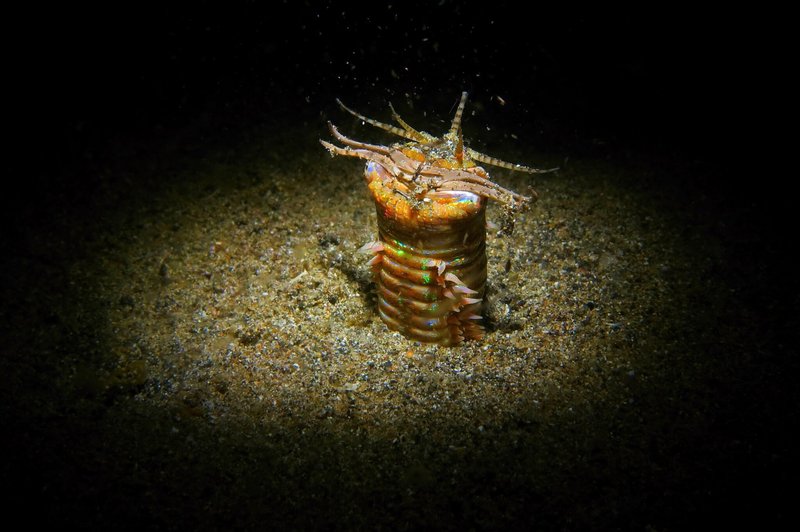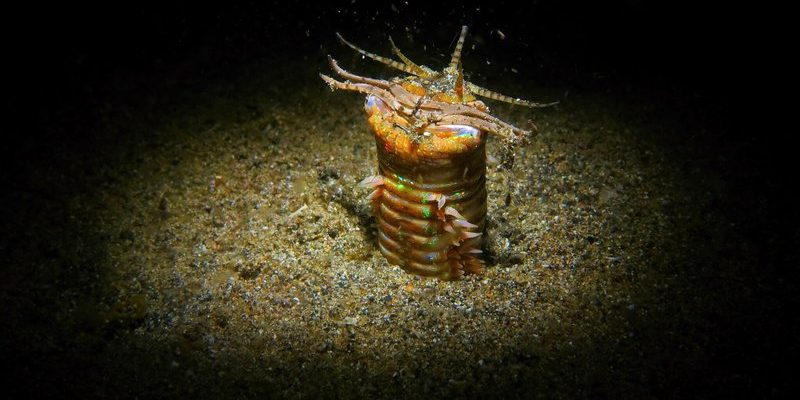
Bobbit worms, known scientifically as *Eunice aphroditois*, require specific sediment depths for their habitats. Imagine a cozy bed: it’s not just about the blanket, but also the mattress, the pillows, and the firmness that makes it comfortable. For Bobbit worms, their “cozy bed” is the sediment they burrow into. Let’s dive in and explore what sediment depth these worms prefer and why it matters for their survival and the ecosystems they inhabit.
Understanding Bobbit Worms
Bobbit worms are fascinating creatures that can reach impressive lengths, sometimes over ten feet! They have long, segmented bodies with powerful jaws that can snap up prey in the blink of an eye. You might be wondering why they’re named Bobbit worms. The name comes from a rather gruesome tale of a man named John Wayne Bobbitt, but rest assured, these worms are all about survival in their underwater world.
These worms are found in various ocean habitats around the globe, largely thriving in warm, tropical waters. The way they hunt is nothing short of theatrical. They bury themselves in the sediment, leaving only their colorful, feathery heads exposed. When a fish swims by, *bam*! Their quick strike catches their meal off guard.
But let’s get back to their habitat: sediment depth plays a critical role in their ability to thrive. This depth ensures they have the right balance of safety from predators, access to food, and a suitable environment to grow and reproduce.
Preferred Sediment Depths
So, what sediment depth do Bobbit worms prefer? Generally, these worms thrive in sediment depths ranging from around 4 to 20 inches. Think of this range like the perfect swimming pool depth—not too shallow for safety and not too deep that they can’t reach the surface for some air.
Sediment that is too shallow can mean they’re more exposed to predators, while sediment that is too deep might restrict their ability to feed effectively. Bobbit worms are known to prefer areas with soft sediment, which allows them to burrow easily and create cozy, secure homes. The right depth not only provides them shelter but also plays a significant role in their feeding habits.
When the sediment is just right, it also supports a variety of other marine life. Smaller organisms that share their environment often thrive in similar depths, meaning more food options for the Bobbit worm.
The Importance of Sediment Composition
Now that we’ve talked about depth, let’s discuss sediment composition. It’s not just about how deep the sediment is; what it’s made of matters too. Bobbit worms don’t just want any old dirt—they prefer a mix of fine sand, silt, and organic material. This combination allows them to dig in easily while also providing nutrients.
Having the right sediment type is essential for the health of their habitat. If the sediment consists of larger rocks or is too compact, it can be challenging for these worms to burrow. It’s like trying to make a sandcastle with pebbles instead of sand—it just doesn’t work!
The good news is that these beautiful creatures often contribute to their environment. Their burrowing helps aerate the sediment, which can boost the health of the ocean floor ecosystem.
What Happens if the Depth is Not Right?
If the sediment isn’t the right depth, there can be significant consequences for Bobbit worms. You might be thinking, “What’s the big deal?” Well, when the sediment is too shallow, they become exposed to more predators like fish and sea turtles. Their natural instinct to hide and ambush prey is compromised.
On the flip side, if the sediment is too deep, they may struggle to reach the surface for oxygen. This lack of access can lead to stress and, ultimately, mortality. It’s like being buried in a soft blanket—comfortable until you can’t breathe!
Additionally, if Bobbit worms can’t thrive, the larger marine ecosystem can be affected. They play an essential role in the food web, and a decline in their populations could impact fish species that rely on them for food.
Bobbit Worms and Their Ecosystem
Bobbit worms are often found in colonies, and their presence can significantly influence their environment. They create habitats for other organisms just by existing in their preferred sediment depths. Their burrowing activities enhance nutrient cycling, benefiting both the sediment itself and the wider marine life relying on that habitat.
You might compare this to how trees in a forest create a home for many creatures. Their roots provide stability and a safe space, while their leaves offer shelter. In a similar way, Bobbit worms contribute to creating a rich environment in the ocean.
In turn, this interaction can help stabilize sediment, preventing erosion and maintaining healthy coastal ecosystems. Basically, these worms are unsung heroes of the ocean floor.
Understanding the sediment depth required for Bobbit worm habitats is crucial, especially as we consider the effects of climate change and ocean pollution. As habitats become compromised due to human activities, it’s essential to prioritize the health of ecosystems that support these incredible creatures.
If you’re passionate about marine life, it’s worth learning more about how we can protect their environments. Whether it’s reducing our plastic waste or advocating for ocean conservation, every little bit helps create a sustainable future for Bobbit worms and their fellow ocean dwellers.
So next time you think about the ocean, remember that beneath the waves lies a complex world of life, and that sediment depth is just one part of a larger story. Let’s keep the conversation going about how we can protect these magnificent creatures and the habitats they call home.

